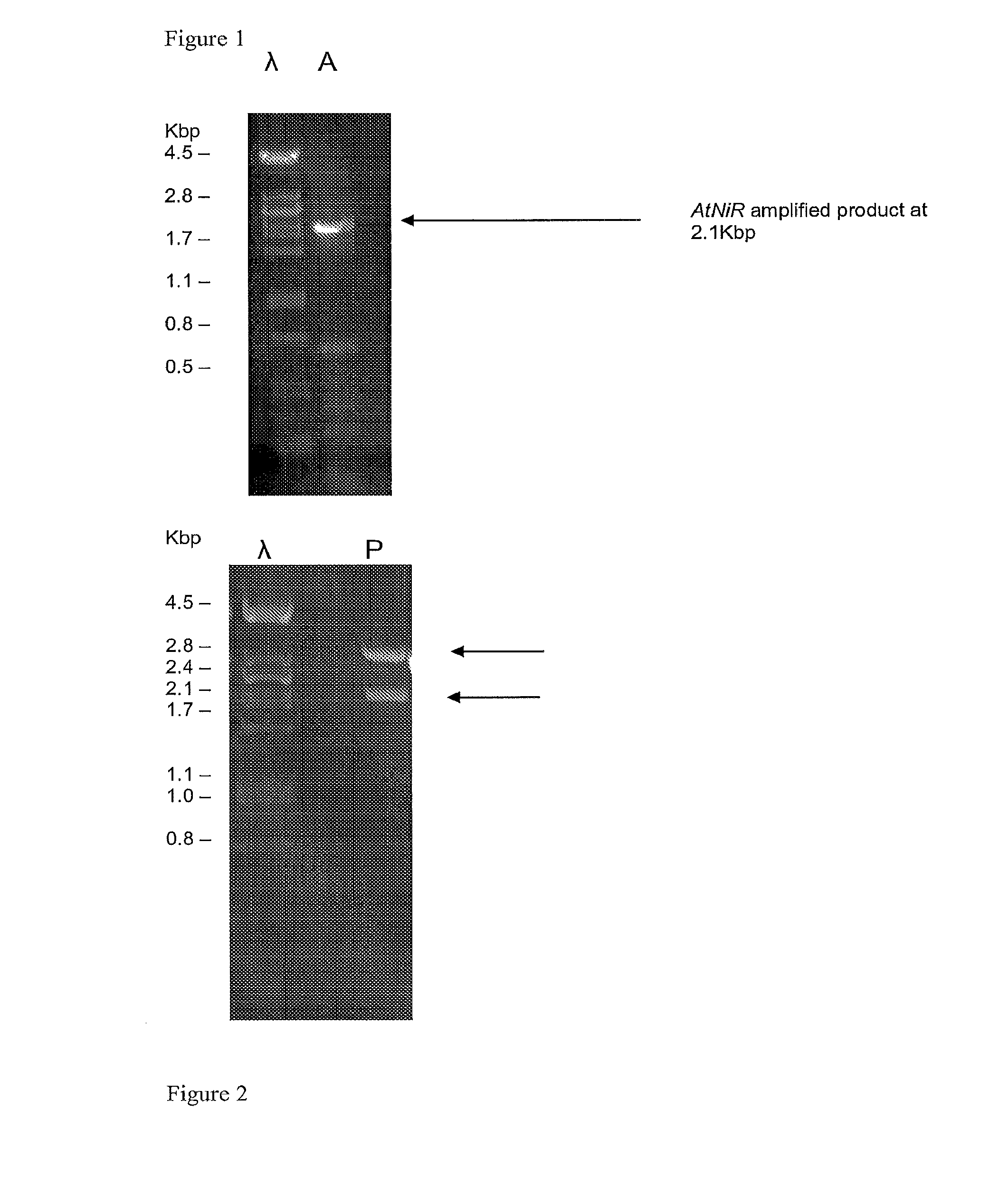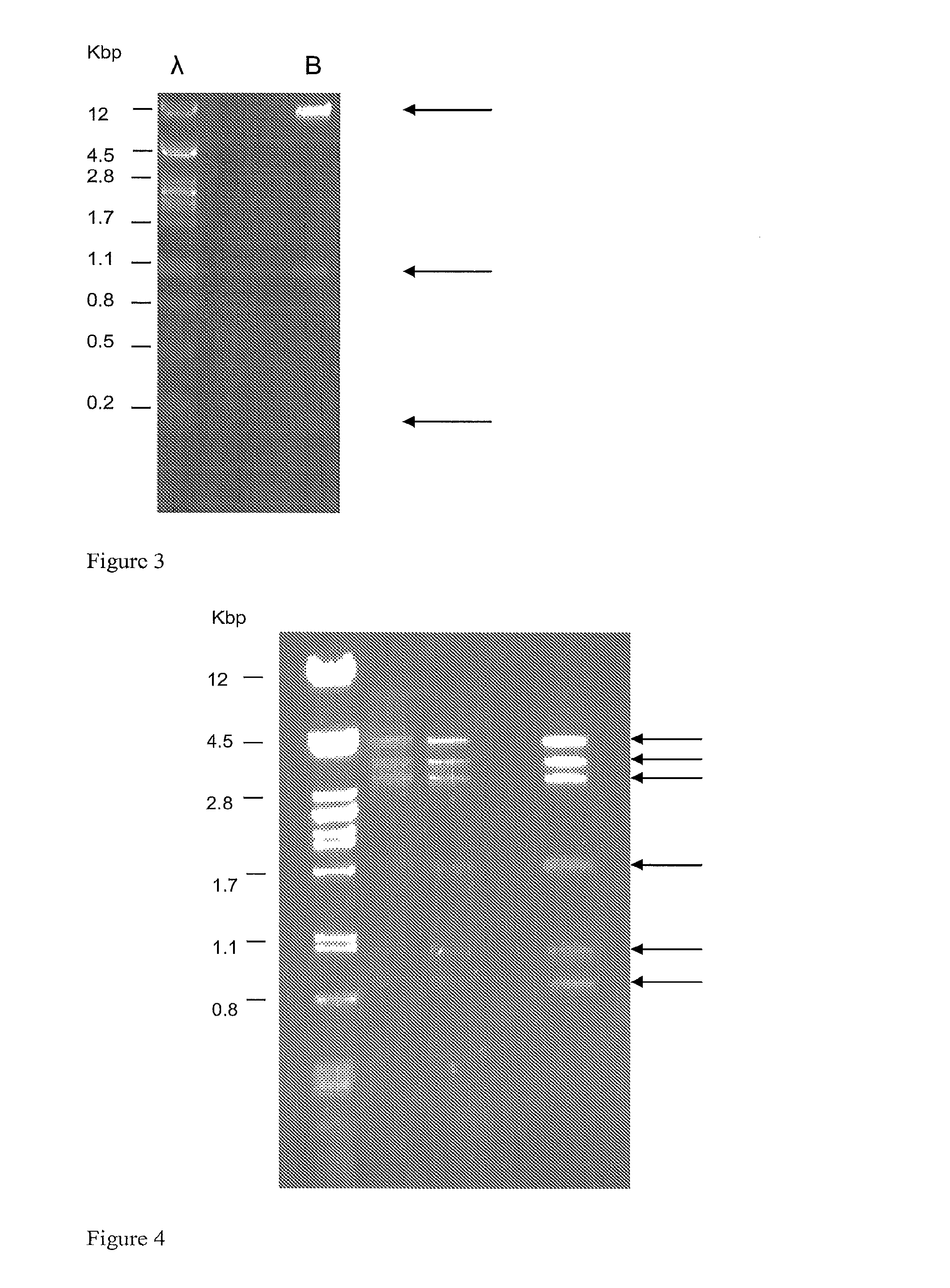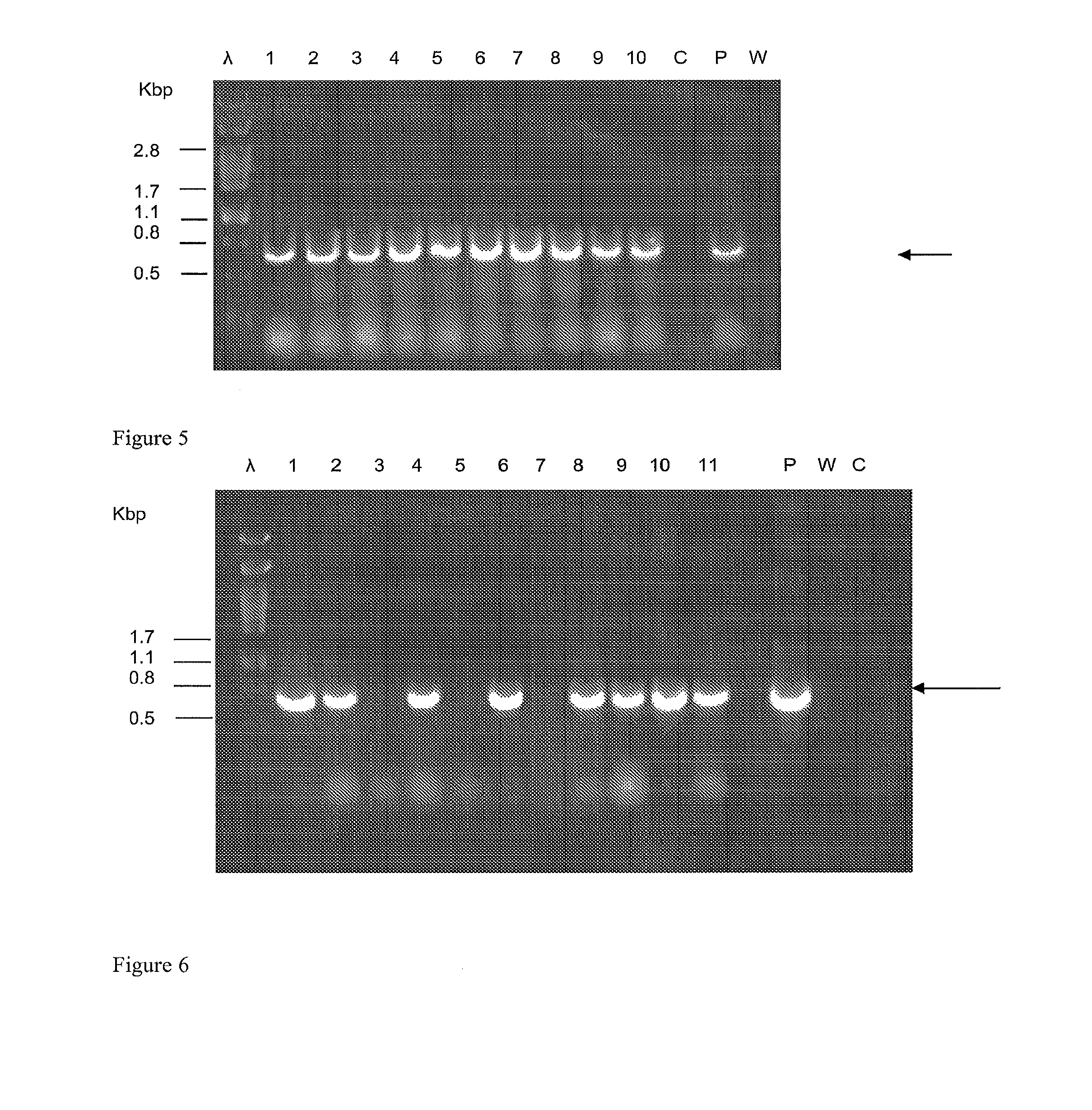Production of plants with decreased nitrite content
a technology of nitrite content and plant, which is applied in the field of transgenic plant production, can solve the problems of nitrite accumulation and chlorotic leaves, the role of gdh in ammonium assimilation, and the chlorosis of young tobacco leaves, etc., and achieve the effect of reducing nitrite conten
- Summary
- Abstract
- Description
- Claims
- Application Information
AI Technical Summary
Benefits of technology
Problems solved by technology
Method used
Image
Examples
example 1
Generation of Arabidopsis Nitrite Reductase (AtNiR) Constructs and Transformation of Tobacco Plants
[0253]In this example the genomic AtNiR gene was isolated, cloned into a transformation construct and inserted into tobacco plants. Transgenic populations were then characterised and analysed for expression of the transgene and NiR activity.
Isolation of A. Thaliana NiR and Cloning into pBluescript
[0254]The full length genomic locus of Arabidopsis NiR is 4380 bp in length (database accession number D14824, see FIGS. 18 & 19). In the following embodiment, a genomic clone comprising the coding sequence plus introns, excluding the 3′ and 5′ non-translated regions present in the full length locus, was isolated. The genomic clone is 2115 bps in length and contains 3 introns and 4 exons. The exons span nucleotides 1-376, 573-928, 1010-1298, 1376-2115 bp of the genomic clone, or nucleotides 1248-1623, 1820-2175, 2257-2545 and 2623-3362 of the full length locus. The cDNA sequence (accession num...
example 2
Characterisation of Tobacco Plants Overexpressing A. thaliana Nitrite Reductase
[0274]In this example, T1 AtNiR transgenics and wild-type (WT) tobacco were grown on different nitrate concentrations for biochemical and molecular analysis. Older source leaves were analysed in comparison to younger sink leaves in order to assess the switch from primary N assimilation to N remobilisation and whether this transition had been altered in the transgenic lines.
Selection of Homozygous Lines
[0275]In order to generate homozygous lines for analysis, T1 seed from selected AtNiR lines generated in Example 1 were planted into compost filled modules. To achieve the correct number of replicates (3 replicates in 3 blocks) for statistical analysis in a trial on 3 different levels of nitrogen, 27 homozygous plants were required from each AtNiR line. In order to obtain 27 homozygous plants per line, 160 seeds from each line were planted since only one quarter of the off-spring would be homozygous for AtNi...
example 3
Generation of Nicotiana tabacum Nitrite Reductase Ethyl Methanesulfonate (EMS) Mutants
[0294]We will perform EMS ethyl methanesulfonate (EMS) mutagenesis to come to a. selection of mutations for each endogenous nitrite reductase polynucleotide. Ethyl methanesulfonate (EMS) causes G->A and C->T point mutations by alkylating Guanine (G). Using this method we can screen for mutations in the endogenous nitrite reductase polynucleotides.
Determination of the Optimal EMS Dosage for Seed Production
[0295]Different EMS dosages and the effect on seed set, germination and plant phenotype will be tested. This will be carried out to identify out the optimal EMS dose to find EMS induced nitrite reductase mutagenesis in Nicotiana. The optimum dose for EMS mutagenesis will be determined by treating seeds with 0, 50, 75, 100, 150, and 200 mM EMS. Briefly, seeds were imbibed for 2 hours at room temperature, treated with EMS for 4 hours at room temperature and washed 5 times for 15 minutes at room tempe...
PUM
| Property | Measurement | Unit |
|---|---|---|
| molecular mass | aaaaa | aaaaa |
| temperature | aaaaa | aaaaa |
| diameter | aaaaa | aaaaa |
Abstract
Description
Claims
Application Information
 Login to View More
Login to View More - R&D
- Intellectual Property
- Life Sciences
- Materials
- Tech Scout
- Unparalleled Data Quality
- Higher Quality Content
- 60% Fewer Hallucinations
Browse by: Latest US Patents, China's latest patents, Technical Efficacy Thesaurus, Application Domain, Technology Topic, Popular Technical Reports.
© 2025 PatSnap. All rights reserved.Legal|Privacy policy|Modern Slavery Act Transparency Statement|Sitemap|About US| Contact US: help@patsnap.com



